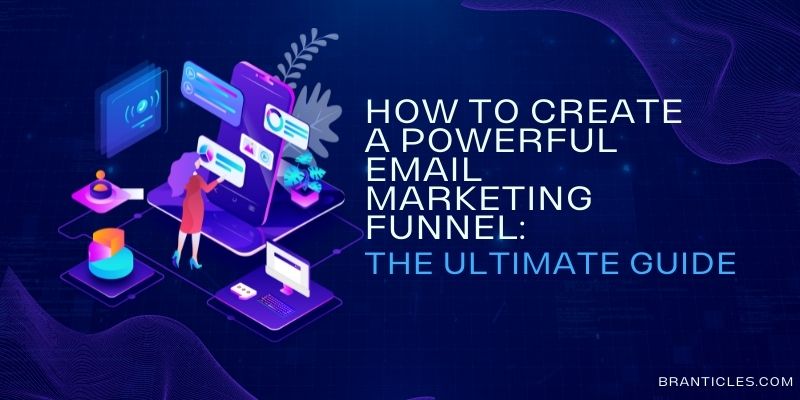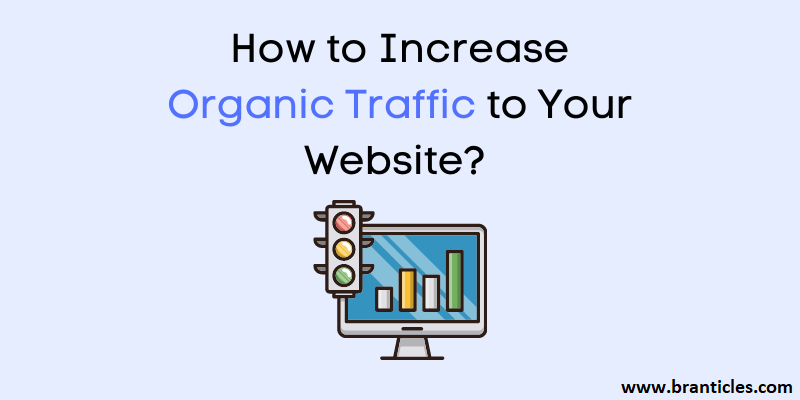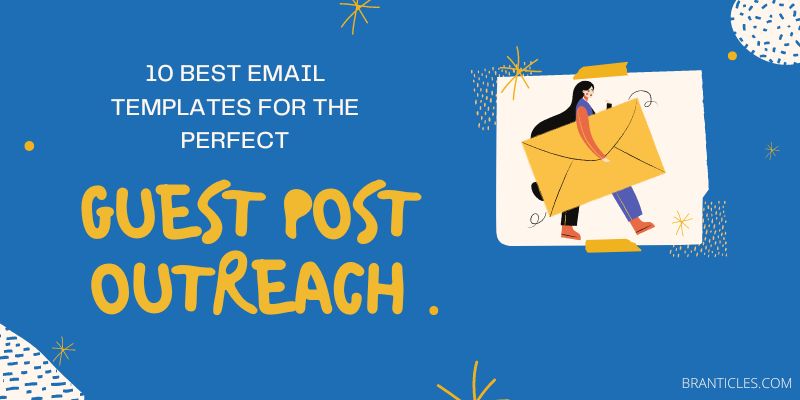Have you experienced a situation where you have got a list of emails full of leads but they don’t seem to turn into sales?
Or maybe, you are able to acquire new customers every day but they don’t stay around for long?
Well, you are not alone.
It happens, especially if you concentrate more on building lists.
You could have thousands of subscribers, but if you don’t know how to move them down the email marketing funnel, they might not convert into loyal customers.
Email marketing, when done right, can help you capture leads, nurture them, and turn them into paying customers who keep coming back for more. In fact, according to a study, for every $1 spent on email marketing, marketers receive $42 in return, on average.
Amazing, right?
You too can achieve such results if you use an effective email marketing strategy. You can achieve even better numbers by creating a powerful email marketing funnel.
In this guide, I tell you how to be purposeful and strategic when creating an email marketing funnel that converts.
But first, let’s find out what an email marketing funnel is.
What Are Email Marketing Funnels?
Email marketing funnels can help you visualize the journey from when a prospect discovers your product to when they purchase it and become a loyal customer.
You need to draft a strategy that bases your email content on a user’s stage in the funnel to address their specific pain points. Using powerful funnels can enable you to send emails that are likely to encourage prospects to move down the sales funnel and convert.
And the best part?
Email marketing funnels allow you to identify the pain points your audience will encounter once they move to the next phase of the buying journey. This way, you can improve their experiences by offering targeted and relevant content.

A powerful email marketing funnel can help you to:
- Build brand awareness.
- Enhance your authority.
- Convert leads into buyers.
- Offer value to your audience.
- Drive more sales.
Now that you know what an email marketing funnel is, you are ready to create one that leads to conversions and customer loyalty.
The 6-Step Process to Build an Email Marketing Funnel That Converts
Most potential customers will not purchase until they understand the complete functionality and usage of a product. That’s why 41% of them read over three to five content pieces before approaching a salesperson.

Image via Demand Gen Report
Building an email marketing funnel with specific content for each stage can help familiarize your target audience with what you offer.
How can you build an email marketing funnel?
In this guide, I’ll tell you about the steps to follow to build a powerful funnel that can drive conversions.
Let’s dive straight in.
Step #1: Select an Email Marketing Platform
The email marketing platform you choose will determine:
- How much you’ll have to pay
- Features that you can get access to
- How your templates will look
- The kind of forms you can use
- Applications or add-ons you can integrate
It is, therefore, essential to carefully choose an email marketing platform that suits your business needs.
Here are the features you should look for while choosing an email marketing platform:
1. Automation
To nurture and engage your audience, you need to send emails that can help you build strong relationships with your target audience. For this, you need a platform that allows you to streamline your email marketing campaigns.
The platform should enable you to:
- Send an onboarding email series.
- Send behavior-triggered emails.
- Engage contacts who return to make more purchases.
- Nurture leads.
- Re-engage customers who’ve fallen off.
- Upsell and cross-sell products and/or services.
- Send automated email series depending on customer feedback.
2. Easy-to-Use Interface
The platform should be easy to use, even if you don’t have technical knowledge. It should help you get work done fast without having to waste time learning how it works.
3. Intuitive Templates
Mobile has become a popular reading environment with 42% of all emails opened on mobile devices.

Image via Litmus
Therefore, it’s important to choose a platform that offers a wide range of free, mobile-friendly, and professionally designed templates. It should also have an intuitive editor that allows you to modify and create templates with ease.
4. Pricing that Supports Growth
The platform you choose should allow you to scale your contacts with reasonable pricing. It should support your growth.
5. In-Depth Segmentation
It should also allow you to segment prospects depending on various factors, including location, stages of the funnel, gender, etc. This way, you can easily approach different consumer segments in a unique way.
Which are the best platforms to create an email marketing funnel?
There are many to choose from, including Constant Contact, Sendinblue, and Drip. However, you can start with Mailchimp if you’re still not sure about the best option for your business. They offer a forever free service plan for startups.
Step #2: Create Email Sign-Up Forms
Creating sign-up forms is your first step towards gaining subscribers for your email marketing funnel. With impressive sign-up forms, you can collect the contact information of your prospects and use it to communicate with them in the future.
How can you create sign-up forms that compel visitors to provide their information?
Here are some best practices you can follow:
- Create simple forms that include minimal steps.
- Do not ask your prospects to fill out too much information.
- Clearly communicate the value they’ll get.
- Have a clear call-to-action (CTA).
- Set clear expectations.
- Allow subscribers to choose the kind of content they want to receive.
- Use attractive visuals.
At this stage of email marketing funnel creation, you can provide offers to your audience or use lead magnets to get their contact information.
How can you create lead magnets that can get visitors to sign up?
You should:
- Identify your target audience – who they are and what they need.
- List their problems.
- List the solutions you can offer.
- Turn that information into a lead magnet (tutorial, ebook, white paper, video, free tool, etc.)
Step #3: Send an Introductory/Welcome Email
Welcome emails enable you to introduce your brand and make a good first impression. You can use them to tell your prospects about what they can expect and set the tone.
How should you write welcome emails?
Ensure that your welcome emails deliver value. They should include the promised lead magnet, discount, or offer.

Image via Asana
The welcome email above from Asana features an excellent design that aligns with their product. It offers clear steps for the subscriber to get started and earn value.
What’s more?
It features actionable headlines and a vibrant CTA.
You can also use your welcome email to introduce your brand and the products or services you offer.

Image via Infogroup
Infogroup thanked the customer for downloading and then explained what they should expect from them, what type of content they send, and how often they send it.
How should you determine what to include in your welcome email?
It depends on your niche, your customers, and how many times you want to contact them.
Do you want to send them one email with all the information or three to five emails over time?
Also consider your sales cycle, brand story, and how you want to tell it.
For example, if your shoe collection website visitors are more likely to buy within 48 hours, you should send your welcome email quickly with all the details and include a discount code.
However, if you sell luxury items or products for which consumers take longer to make purchase decisions, you can send a series of emails over time.
If you are not sure how to go about this, I recommend that you don’t wait more than one day before sending the next email.
Some of the things you can include in your welcome email are:
- Your brand’s story
- Social proof (customer feedback or user-generated content)
- Unique features
- Discount code or offer
- Your products or services
Once you decide what to include in your welcome email series, create and structure your email marketing funnel templates. Consistently maintain your brand colors in all the emails you send and add visuals to make them stand out.
What’s more?
You should include a “confirm subscription” button in the first email, right above the fold. If a subscriber clicks on it, they confirm that they would like to receive future emails from you.
How does this help?
It can prevent your emails from landing up in the spam folder.
Step #4: Nurture Your Leads with Educational Emails
Lead nurturing can help you develop relationships with your prospects throughout the email marketing funnel. You should enlighten them about your offers and provide them with information that can help them solve their problems.
What does this entail?
You should use educational content to gain their trust, add value to their lives, and influence them to purchase from you.
How can you do it?
Understand who your customers are, then deliver personalized content to them depending on the stage of the email marketing funnel they are in. You should also consider their interests and browsing behavior.
Make sure that you know them well enough and understand what they need. This can help you provide them with educational content and solutions at the right time. You should make them remember your brand when they are finally ready to purchase.
You can send emails that include:
- Product tutorials
- Product updates and tips
- Demo videos
- New product releases
- Educational content that asserts your authority in the industry
- Content that is dependent on a prospect’s browsing behavior or actions
- Incentives or offers that can drive them to your website (such as a link to a valuable video)
Pro tip: Ensure your educational emails showcase and teach your prospects what to expect from a future purchase.
Step #5: Convert Your Leads
Your subscribers have made it past the previous steps in the email marketing funnel and are now interested in what you have to offer. You’ve continuously offered value to build strong relationships with them.
They have been responding well and showing signs of interest. They are now ready to convert.
In this stage of the email marketing funnel, you should continue sending them emails meant to nurture your relationship but with a conversion strategy in mind.
For example:
- You can feature gifts, discounts, free shipping, or limited offers as an incentive to drive conversions.

Image via Kobo
- You can use the fear of missing out (FOMO) technique to boost sales.
Use scarcity and urgency to drive more conversions. It will make them think that if they don’t take advantage of the offer, they will lose out on incredible experiences.

Image via Nonprofit Marketing Guide
- Use powerful calls-to-action (CTAs). Your calls-to-action should clearly state what the reader should do. They should also be short, powerful, and actionable.
It can clarify things for the reader while also encouraging them to act or move further down the funnel.
- Send abandoned cart emails.
What happens when customers do not complete a purchase?
You can remind them and, if possible, make them an offer to change their mind about completing a purchase.
According to a study, the open rates of cart abandonment emails are high at 40.76%, with conversion rates of 8.24% in 2020.

Image via Barilliance
What does this mean?
Reaching out to a client with relevant messages can deliver results. Recognize when a customer shows interest and reach back out to them for results. To make things interesting, show them similar products and offer them a discount or free shipping.

Image via Really Good Emails
Step #6: Retain Your Customers
Your email marketing funnel does not end after a conversion. You should continue building relationships with those who have already made a purchase.
Retaining the relationship increases the customer’s lifetime value and can increase your return on investment.
You should continue priming customers for their next purchases even after they convert.
Here are a few tips on customer retention:
- Keep them in the know about your new products and services to stay top of mind.
- Use their purchase history to send them upselling and cross-selling offers.
- Establish a referral loyalty program using which they can earn discounts or earn points for referring friends.
- Offer them exclusive discounts or offers.
- Send them an email to ask if they are enjoying the product, days after they made their last purchase.
Are You Ready to Boost Conversions with Your Email Marketing Funnel?
An excellent email marketing funnel can help you turn prospective leads into loyal customers. It can prevent you from focusing solely on building lists and consider other aspects such as increasing customer retention.
Creating a powerful email marketing funnel may sound like an overwhelming task but it is easier to achieve with a focused mind. You can anticipate customer problems, offer them value, and guide them through their purchase journey.
What kind of challenges do you face when creating an email marketing funnel? Share your experience with us below and check out this detailed infographic on creating powerful ones.




You could definitely see your enthusiasm in the work you write.
The sector hopes for even more passionate writers such as you who are not afraid to say how they believe.
At all times go after your heart.
I conceive other website proprietors should take this website as an example, very clean and great user friendly pattern.
Rattling clear web site, appreciate it for this post.
I’m truly enjoying the design and layout of your website. It’s a very easy on the eyes which makes it much more enjoyable for me to come here and visit more often. Did you hire out a developer to create your theme?
Superb work!
Thank you
I’m curious to find out what blog platform you have been using?
I’m experiencing some small security problems with my latest blog and I would like to
find something more safe. Do you have any solutions?
Hi there, we are using WordPress platform. What type of security issues you are facing on your current blogging platform.
Hi there, just became aware of your blog through Google, and found that it is truly informative.
I’m gonna watch out for brussels. I’ll appreciate if you continue this in future. A lot of people will be benefited from your writing. Cheers!
Touche. Sound arguments. Keep up the good effort.
Thanks in support of sharing such a pleasant idea, paragraph is nice,
that’s why I have read it fully.
Thank you
Thank you for the auspicious writeup. It in fact was a amusement account it.
Look advanced to far added agreeable from you!
However, how can we communicate?
This piece of writing is really a nice one it assists new web people, who are wishing
for blogging.
If you are going for finest contents like me, only pay a quick visit this website daily as it gives quality contents, thanks
This is really interesting, You’re an overly skilled blogger.
I’ve joined your feed and stay up for seeking
extra of your magnificent post. Additionally, I have shared your site in my social
networks
Post writing is also a fun, if you know afterward you can write if not it
is difficult to write.
I like the helpful information you provide in your articles.
I’ll bookmark your weblog and check again here frequently.
I’m quite sure I’ll learn plenty of new stuff right here!
Good luck for the next!
Very neat blog post.Really looking forward to read more. Keep writing.
It is appropriate time to make some plans for the future and it is time to be happy. I have read this post and if I could I desire to suggest you some interesting things or suggestions. Perhaps you could write next articles referring to this article. I wish to read even more things about it!
I value the blog post.Really looking dispatch to entre more.
Customize your own unique coffee, text / photos / logo / expression bag and other personalized patterns, Not only on coffee, but also on the surface of yogurt / beer / bread / biscuits / macarone and o